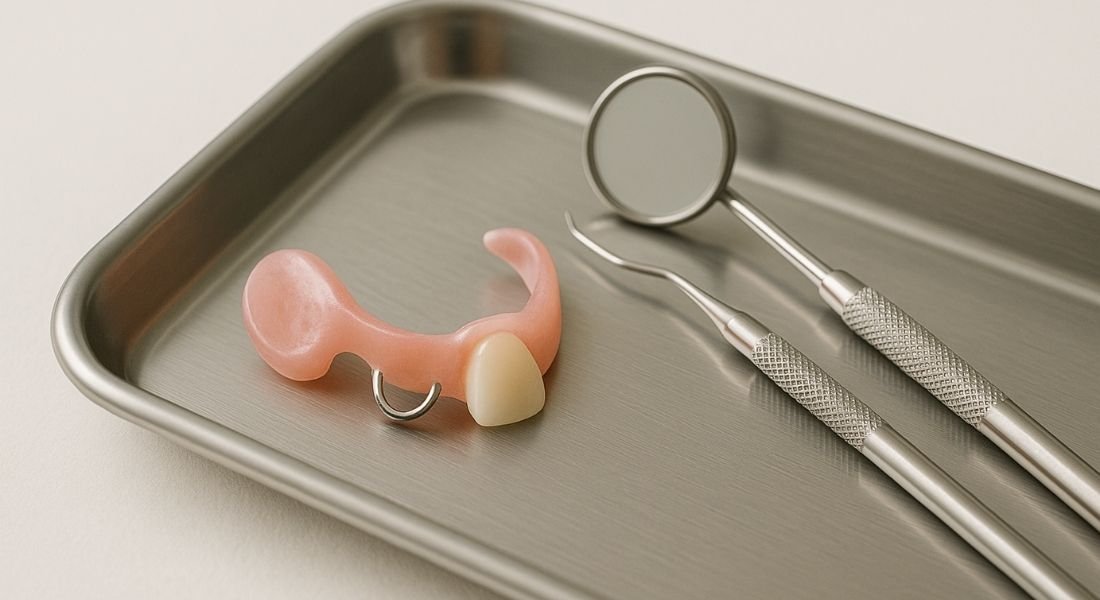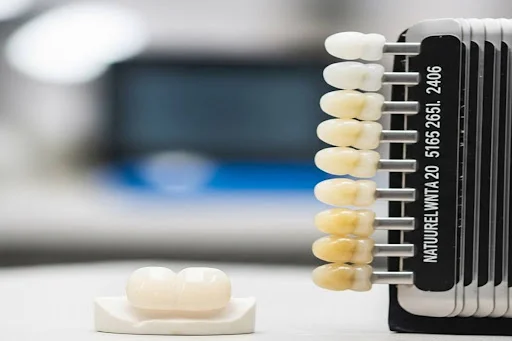If you are missing a tooth and want a fast, affordable fix, a flipper tooth might be the solution you have been looking for. Whether your tooth was lost due to injury, decay or extraction, flipper teeth offer a simple, temporary way to restore your smile without the high costs of implants or bridges.
In this complete guide, we’ll break down what a flipper tooth is, how it works, its pros and cons, care tips and everything else you need to know to decide if it is right for you.
What Is a Flipper Tooth?
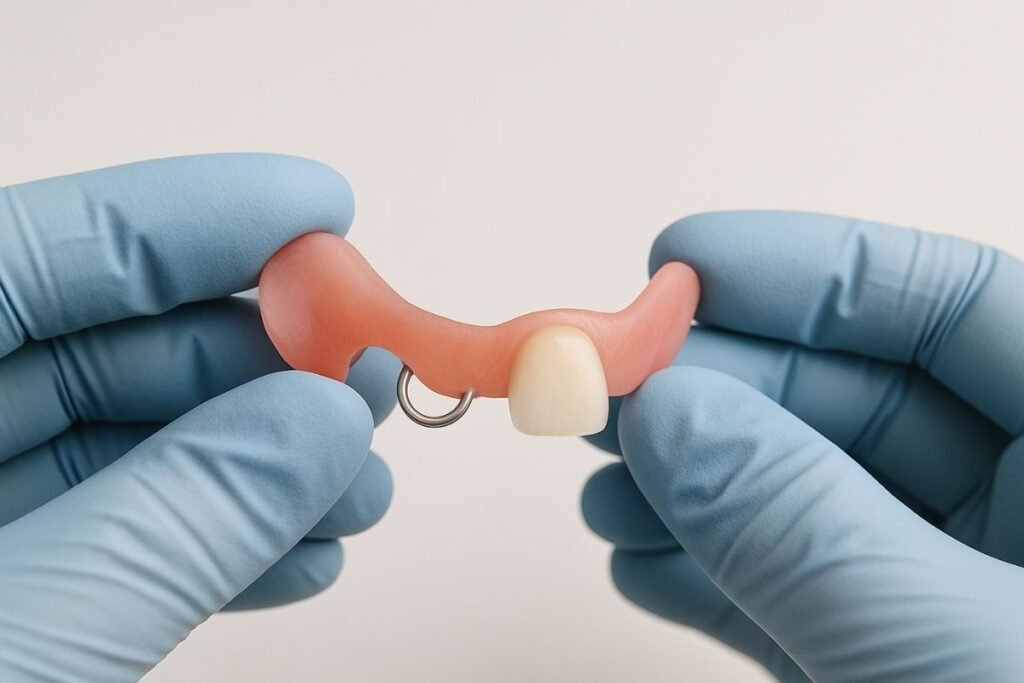
A flipper tooth which is also known as a temporary acrylic partial denture is a removable dental appliance made to replace one or more missing teeth. It’s commonly used as a short term option while patients wait for a more permanent solution like a dental implant or fixed bridge.
Constructed from pink acrylic that mimics your gum line, the flipper holds one or more prosthetic teeth made of dental grade resin. The entire appliance is designed to fit comfortably over your gums or snap into place using surrounding teeth for support.
Despite being lightweight and relatively simple, flipper teeth play a big role in both aesthetics and functionality. They can help maintain the structure of your mouth, prevent nearby teeth from shifting, and improve your confidence when speaking or smiling.
Why Flipper Teeth Matter: Real Benefits You Should Know
Flipper teeth restore your smile, protect oral health and prevent teeth from shifting making them a smart, affordable solution after tooth loss.
Fast and Affordable
One of the biggest advantages of a flipper tooth is how quickly and inexpensively it can be made. Unlike implants that take months to complete and cost thousands, a flipper is often ready within a few days and typically costs between $300 and $500 sometimes less if covered by insurance.
Improves Your Appearance Instantly
Missing a front tooth can be emotionally distressing. Flipper teeth restore your smile in a way that looks natural and helps you feel more like yourself again. They are color matched to your existing teeth, so they blend in well, especially from a conversational distance.
Easy to Use and Maintain
Pop it in, take it out, it’s really that simple. You don’t need any special tools or adhesive to wear a flipper. As long as you keep it clean and handle it with care, it can serve you well for months or even years, depending on your needs.
Protects Oral Health
While you are waiting for a more permanent dental solution, flipper teeth help stabilize nearby teeth and maintain bite alignment. This prevents the teeth on either side of the gap from shifting, which could lead to jaw issues and long term misalignment.
How a Flipper Tooth Is Made: What to Expect
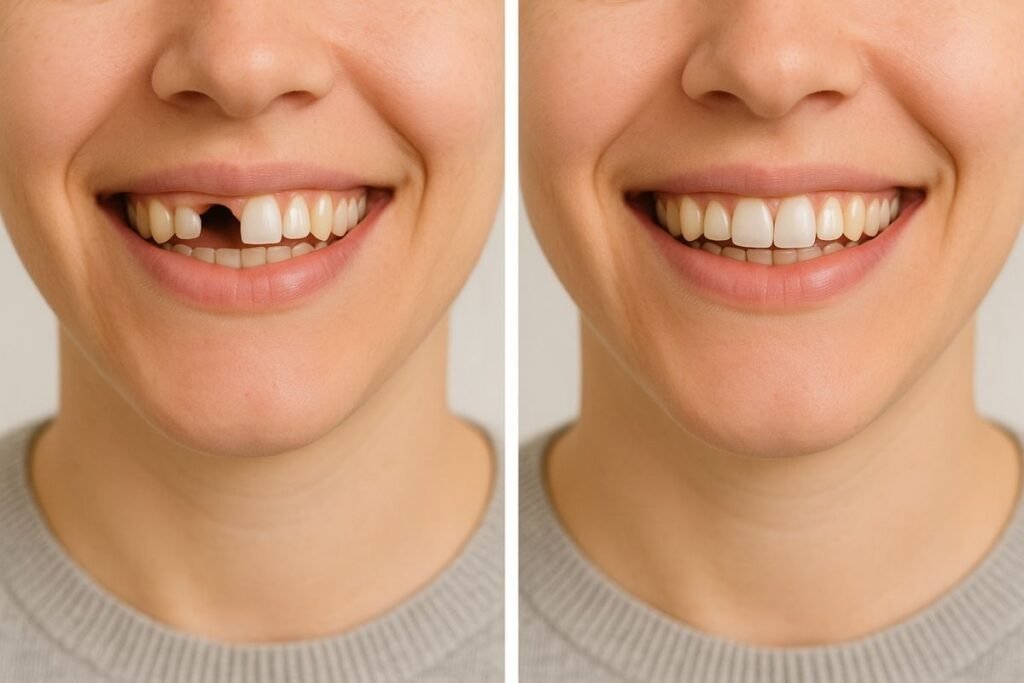
Getting a flipper tooth is a relatively simple process. Here’s a step by step look at what usually happens:
Dental Impression
Your dentist will start by taking a mold of your mouth using a soft impression material. This captures the exact contours of your gums and any remaining teeth.
Model Creation
The impression is then sent to a dental lab, where a technician uses it to create a custom fit acrylic base. This base will support the artificial tooth (or teeth).
Fabrication
Using the model, the lab builds the pink acrylic plate and shapes it to look like your gums. Then they add a false tooth that matches the shape and color of your existing teeth.
Fitting and Adjustment
Once your flipper is ready, you’ll return to the dentist for a fitting. They’ll make minor adjustments to ensure it fits snugly and comfortably. If it feels loose or causes irritation, it can be reshaped for a better fit.
Follow-Up
After a few days of wearing it, you may need a follow-up appointment to adjust any pressure points or discomfort. A well fitting flipper should feel comfortable and secure when speaking or eating.
Daily Care Tips for Your Flipper Tooth
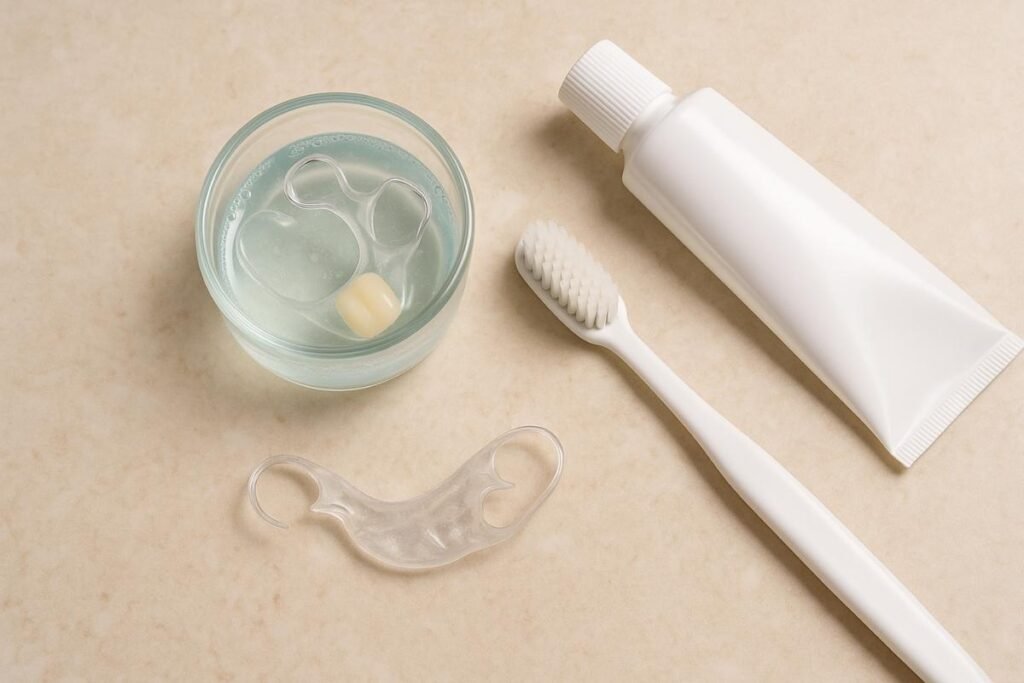
Flipper teeth are easy to care for, but they do require regular attention to keep them clean and functional. Here’s how to maintain yours properly:
Clean It Daily
Use a soft bristle toothbrush and mild soap (not toothpaste) to gently clean the flipper each day. Rinse it under lukewarm water, never hot water, as that can warp the acrylic.
Soak Overnight
When not in use, soak your flipper in water or a denture cleaning solution to keep it moist and prevent cracking. Never let it dry out, as this can make it brittle and uncomfortable.
Avoid Hard or Sticky Foods
While you can eat with a flipper, it is best to avoid tough or sticky items that could dislodge or damage it. Stick to soft, easy to chew foods until you are used to wearing it.
Don’t Overwear It
Although flippers are designed to be worn most of the day, giving your gums a break at night can help prevent irritation or gum recession. Follow your dentist’s guidance on how long to wear it daily.
Watch for Signs of Damage
If your flipper feels loose, cracks or starts irritating your mouth, don’t ignore it. Call your dentist for an adjustment or repair to prevent further issues.
Is a Flipper Tooth Right for You?
Flipper teeth are commonly recommended for:
- People waiting for dental implants or bridges
- Those who can’t afford permanent restorations right away
- Children or teens who need temporary solutions until growth stops
- Individuals needing a quick fix for front tooth loss
However, flippers are not perfect for everyone. They are not as durable as permanent options and may not be ideal for people who need to replace multiple teeth long term.
In such cases, options like dental implants, fixed bridges or flexible partial dentures may be better suited. Always consult your dentist to determine if a flipper tooth is the right choice for your specific needs.
Conclusion
A flipper tooth offers a practical, affordable and relatively quick solution to tooth loss. While it may not be permanent, it fills a crucial gap both literally and figuratively for people who need a temporary fix before a more lasting restoration.
From improving your appearance to maintaining oral structure, flipper teeth play an important role in transitional dental care. And with proper maintenance, they can last longer than many expect.
So if you have been wondering what to do about a missing tooth, don’t wait. A flipper tooth might be exactly what you need to smile confidently again.
FAQs
Can you eat with a flipper tooth?
Yes, you can eat with a flipper tooth, though you should avoid very hard or sticky foods. Flippers are made from lightweight acrylic, which can break under pressure. Start with soft foods and gradually work your way up to more textured items as you adjust.
How long can a flipper tooth last?
With good care, a flipper tooth can last anywhere from several months to a couple of years. However, since it’s a temporary solution, it is typically not meant for long term use. Durability depends on how often you wear it and how well you maintain it.
Is it uncomfortable to wear a flipper tooth?
There may be some initial discomfort, especially during the first few days of wear. Some people experience mild soreness or speech difficulty at first, but most adjust quickly. If pain or irritation continues, your dentist can make adjustments.
Can I sleep with my flipper tooth in?
It is usually recommended to remove your flipper tooth while sleeping. This allows your gums to rest and prevents excessive wear on the appliance. Leaving it out overnight also helps prevent bacteria buildup and keeps your mouth healthier.
Do flipper teeth look natural?
Yes, when properly made, flipper teeth can blend in well with your existing teeth. Dental labs match the color and shape of your natural teeth closely. Up close, you may notice slight differences, but most people won’t be able to tell you are wearing one.
How much does a flipper tooth cost?
The cost of a flipper tooth typically ranges from $300 to $500, depending on the number of teeth it replaces and your dental provider. Some insurance plans may cover part of the cost, especially if it is a medically necessary temporary solution.

